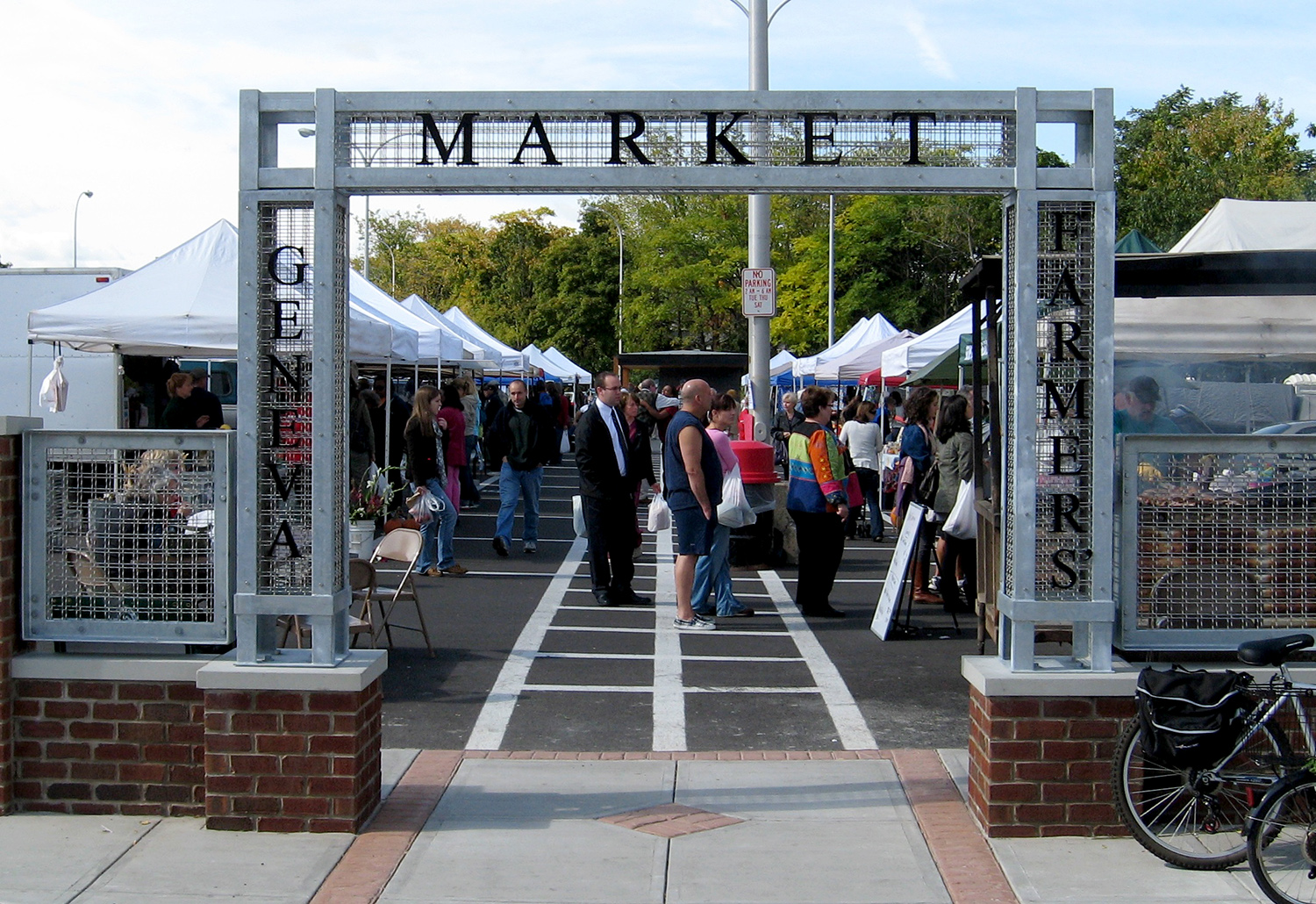Community... By Design: The Farmers’ Market as a Civic Space
Nine months and a lot of legwork later, that market opened and looked exactly like the sketch, including the hundreds of people in the drawing. It’s remained that way for 10 years.
Some of my favorite architecture projects have no walls.
Farmers’ markets are a great example. No doubt, you can put two farmers next to each other on some pavement, advertise it as a farmers’ market, and people will come and buy the produce. That is a good thing wherever it happens – locally-sourced products, local farm jobs, and chin-dribblingly, lip-lickingly good fruits and vegetables. Those are ingredients every community can use.
Me? I’m more interested in a recipe that adds in more ingredients – downtown revitalization, community-building, arts-appreciation, and economic development. That recipe requires a farmers’ market be can be a designed, civic place with a distinct character. In a word – a Destination.
A great farmers’ market has the power to strengthen neighborly bonds by providing a regular, informal meeting place where trust can be developed. It helps build pride when residents see a vibrant market teeming with shiny, happy people carrying bouquets and baguettes. It helps incubate new businesses, providing low-overhead for niche retailers who, a few years later, graduate to a permanent storefront and already have a strong local customer-base. And it helps create a Destination – in proximity to other storefront businesses – putting feet on the street and giving nearby merchants a shot at a sale.
You might be thinking – that’s all great, but how does this belong in a column about architecture? My answer is simple: Architecture is a tool to facilitate community. And that means thinking about design in a broader way.
As an architect married to a farmer, it now seems predestined that I’d want to help design vibrant, memorable farmers’ markets. But when I “designed” a farmers’ market for Perry 11 years ago, there were no floor plans and no contractor. The challenge was to create a memorable place that would appear out of the morning mist on a downtown side street each Saturday morning, become an irresistible destination, and then melt away four hours later and become a vehicular thoroughfare once more. Like any architecture project, there were the program requirements and the specifications.
Design Specifications For A Farmers’ Market:
- an intimate scale and a festive character.
- a critical mass and diversity of vendors to ensure that first time visitors found what they were looking for.
- a restaurant and places to sit – in the shade – and sip cool drinks while listening to great music.
- craft demonstrations each week, and an artist painting en plein air.
- Vendors placed close together would create a lively density and encourage chance encounters.
- A memorable, moveable, yet large Main Street gateway to close off the street, promote the event, and safely block vehicular traffic. My answer was that I found a neighbor just crazy enough to drive his 1938 Allis Chalmers tractor down each week, pulling a wagon on which could be bolted an 8’ high sign.
- Balloons. The sketch of the market I did showed balloons tied to the tractor’s steering wheel. So I contracted with the adjacent florist to blow them up and tie them on each morning once the tractor was parked.
- A logo made by a local artist.
Nine months and a lot of legwork later, that market opened and looked exactly like the sketch, including the hundreds of people in the drawing. It’s remained that way for 10 years.
This year it moved to its new home along Main Street, a “Festival Plaza” custom-designed for the well-established event, with a permanent performance space, a concrete pedestrian spine (that can accommodate 60 chalkers for the community’s signature Chalk Art Festival) and a promise to nurture more downtown festivities.
There are farmers’ markets throughout the region that demonstrate the full spectrum of “design.” Stop in at some and see if, in addition to a variety of fresh produce, you don’t also experience a variety of place-making: from almost non-existent to dynamic, comfortably-scaled and memorable.
Strong civic spaces build civic pride and identity, and ultimately serve to turn distracted “residents” into engaged “citizens”. At a well-designed market you get all that – and perfect peaches too. See you at the market!


